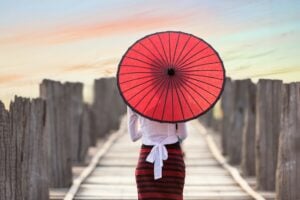
As I drove through the countryside outside of Uji, I marveled at the sight of fluffy bushes adorning the mountainside. Resembling soft green clouds, their delicate leaves swayed in the breeze, destined one day to become tea.
Walking through the narrow wooden alleys, a sweet scent—fruity, almost chestnut-like—wafted out of the tea shops and market stalls. Seated in a small restaurant, a warm cup awaited, providing a comforting backdrop as I perused the menu in search of a satisfying meal.
Much of the Kyoto countryside comprises these fields that ascend mountainsides and fill valleys. To a foreigner, this panoramic view is astonishing and almost surreal. However, for locals, it’s an everyday scene.
Yet, do you comprehend the journey from a leafy bush to a comforting cup of tea? What sets green tea apart from other varieties like Oolong or black tea? After all, they all come from the same plant, right? And what exactly is matcha?
While many associate Japan with green tea, few truly grasp its essence. So, let’s delve into it.
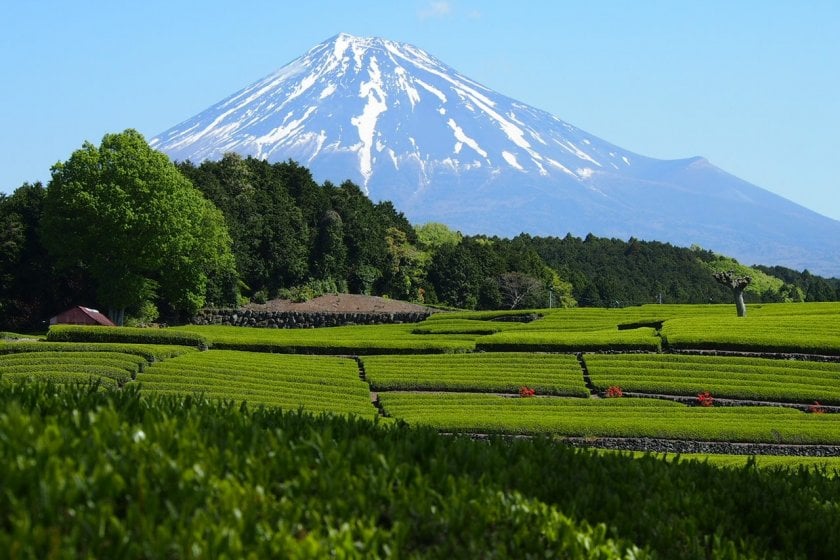
What is Green Tea?
Green tea is a type of tea that is made from Camellia sinensis leaves and buds, the same plant that is used to produce black tea, oolong tea, and white tea. The distinctive characteristic of green tea is that it undergoes minimal oxidation during processing, which helps to preserve its natural color, flavor, and nutritional content.
Here’s a brief overview of the process of making green tea:
- Harvesting: The young leaves and buds of the tea plant are plucked by hand or machine. The time of harvesting can affect the flavor and characteristics of the tea.
- Withering: The harvested leaves are spread out to wither, allowing them to lose some of their moisture content. This step makes the leaves more pliable.
- Steaming or Pan-Frying: The withered leaves are then processed to prevent oxidation. In Japan, steaming is a common method, while in China, pan-frying is often used. Both methods help to preserve the natural green color of the leaves.
- Rolling: The leaves may be rolled to shape them and break down cell walls, releasing enzymes. This step can influence the flavor of the tea.
- Drying: The tea leaves are dried to remove any remaining moisture. This final step helps to lock in the flavor and prevent further oxidation.
Because of the minimal oxidation, green tea retains more of its natural polyphenols and antioxidants, including catechins such as epigallocatechin gallate (EGCG). These compounds are believed to have various health benefits, including antioxidant properties and potential positive effects on heart health.
Green tea is known for its diverse range of flavors, which can vary depending on factors such as the type of tea plant, growing conditions, and processing methods. Common flavor profiles include grassy, vegetal, nutty, floral, and sweet notes.
There are various types of green tea, as mentioned in the previous response, each with its own unique characteristics. The popularity of green tea has grown worldwide, not only for its taste but also for its potential health benefits.
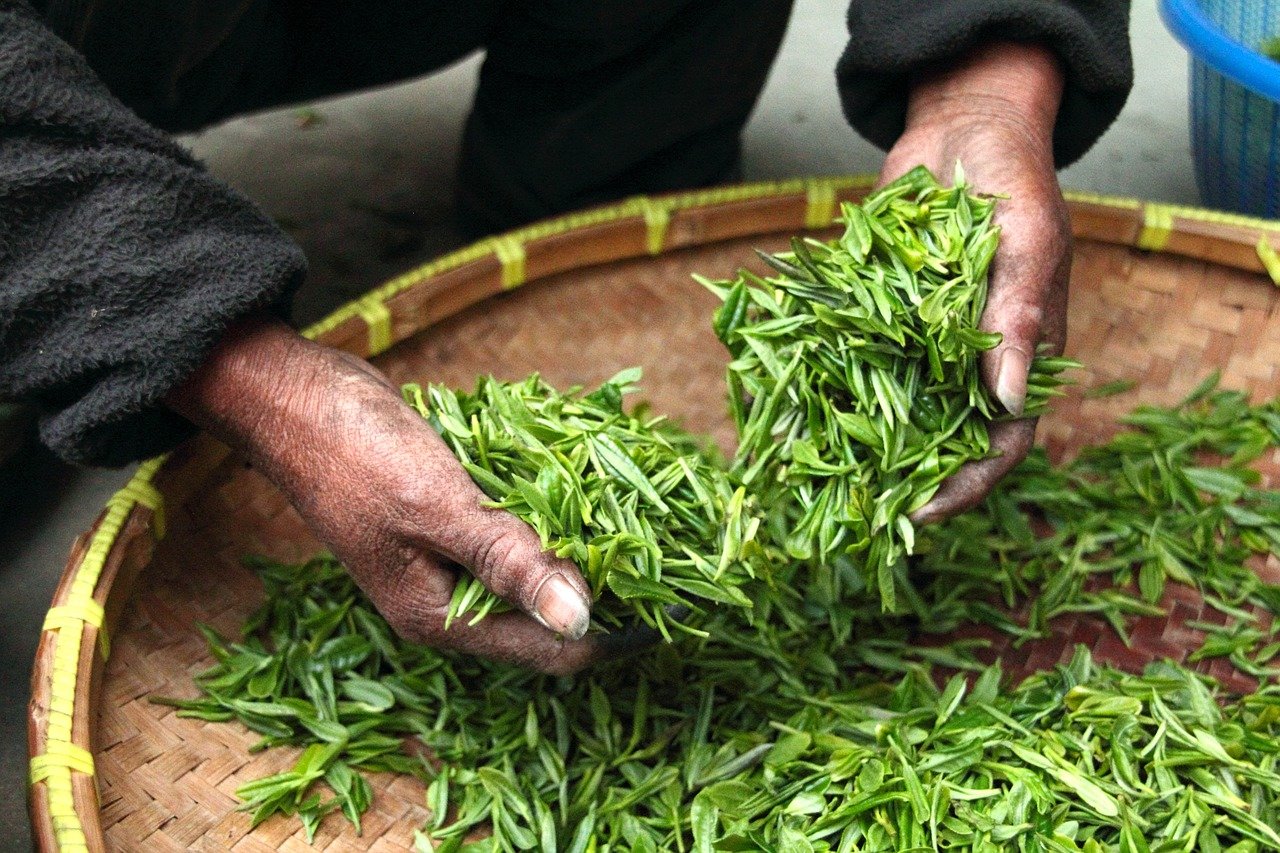
What is the history of tea in Japan?
The history of tea in Japan is intricate and closely connected to cultural, religious, and social dimensions. Tea found its way to Japan from China, with Buddhist monks likely serving as conduits during their travels for religious studies. This introduction marked the beginning of a journey that would intertwine tea with various facets of Japanese life.
In the 6th century, the earliest records indicate the introduction of tea to Japan. Buddhist monks, returning from their sojourns in China, not only brought back tea seeds but also imparted knowledge on tea preparation. Initially utilized for medicinal and religious purposes, tea gradually permeated different strata of Japanese society.
As tea consumption and cultivation advanced, it gained favor among the aristocracy and the samurai class during the Heian period (794–1185). The elite regarded tea as a fashionable beverage, embedding it further into Japanese culture.
During the Kamakura period (1185–1333), the connection between tea and Zen Buddhism strengthened. Eisai, a Japanese Buddhist monk, contributed significantly by authoring “Kissa Yojoki” (“How to Stay Healthy by Drinking Tea”), emphasizing tea’s health benefits. Eisai’s act of planting tea seeds at the Kozan-ji temple in Kyoto further underscored the deepening ties between tea and spirituality.
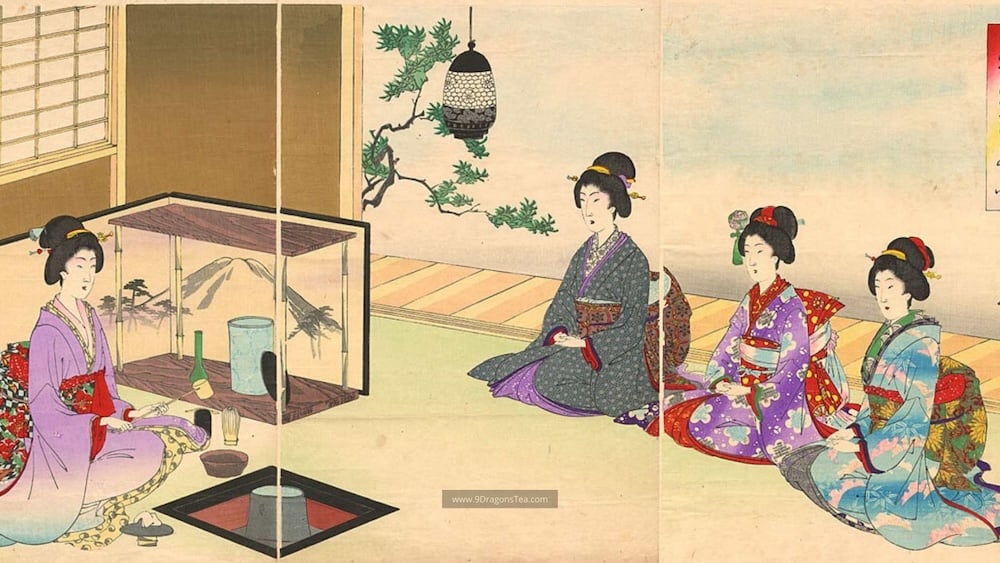
Tea continued its spread during the Muromachi period (1336–1573), particularly among the samurai class. The concept of “wabi,” characterized by simplicity and understated elegance, became integral to the tea ceremony, reflecting a cultural shift.
Sen no Rikyū (1522–1591), a prominent tea master, played a pivotal role in shaping Japanese tea culture. He refined the tea ceremony, emphasizing principles such as harmony, respect, purity, and tranquility. Rikyū’s teachings laid the foundation for the modern Japanese tea ceremony, influencing its core philosophy.
During the Momoyama period (1568–1603), the Way of Tea, known as “Chanoyu” or “Chado,” emerged as a formalized practice. The tea ceremony became a means to cultivate spiritual discipline, aesthetic appreciation, and social harmony.
The Edo period (1603–1868) witnessed the construction of dedicated tea houses like the famous Taian tea house in Kyoto. Practitioners focused on the aesthetics of both tea houses and gardens, enhancing the overall tea experience.
In the late 19th and early 20th centuries, the Japanese tea ceremony underwent transformations as Japan modernized. Despite changes, the practice continued to evolve, evolving into both a traditional art form and a popular cultural activity today.
Japanese green tea, encompassing varieties such as sencha, matcha, gyokuro, and others, remains deeply ingrained in Japanese culture. Appreciated for its diverse flavors, health benefits, and cultural significance, green tea continues to be a cherished aspect of daily life in Japan.
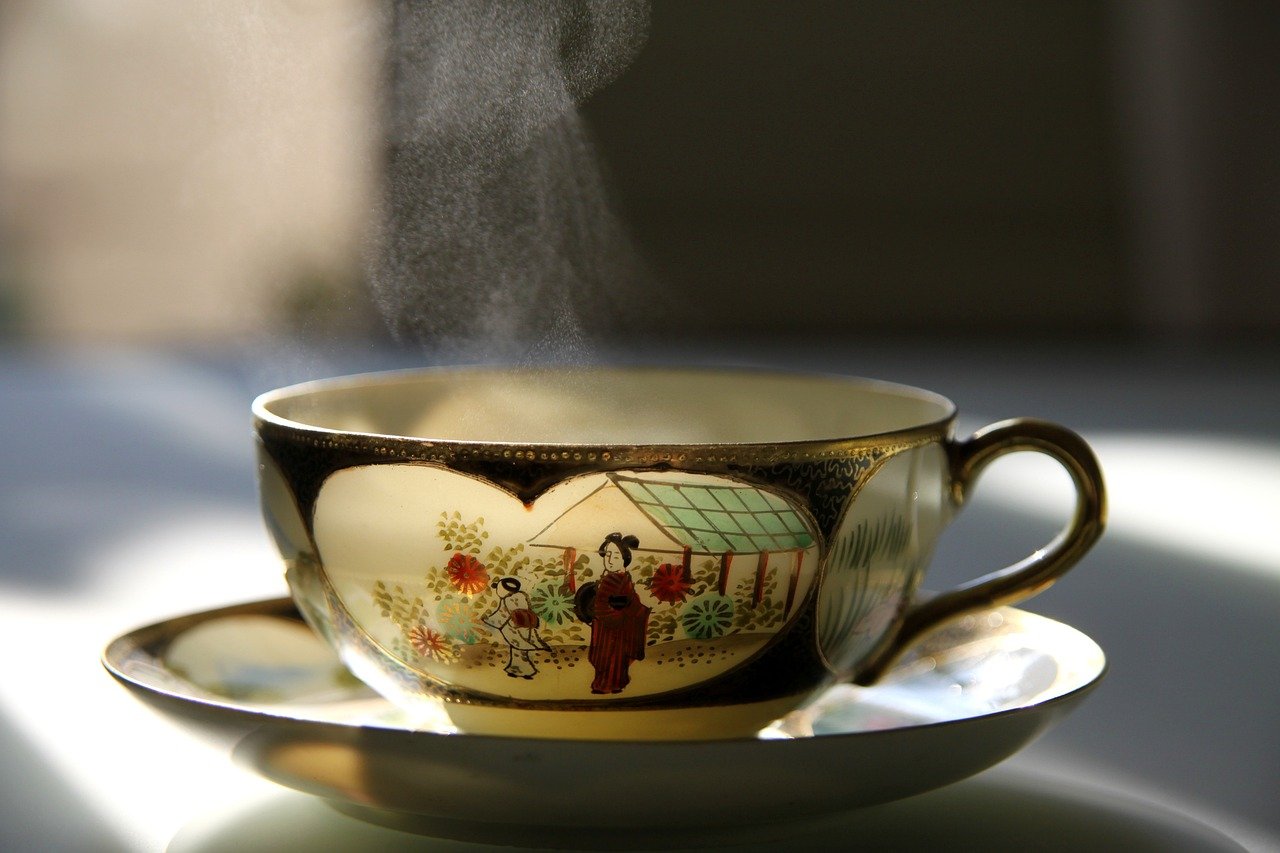
What are different types of tea common in Japan?
Japan is known for producing a variety of green teas, each with its own unique flavor profile and characteristics. Some of the most popular types of green tea in Japan include:
- Sencha: This is the most commonly consumed green tea in Japan. It is characterized by its vibrant green color and a refreshing, slightly astringent taste. Sencha is made from the top leaves of the tea plant and is typically steamed to preserve its color and flavor.
- Matcha: Matcha is a powdered green tea that is made by grinding shade-grown tea leaves into a fine powder. It is often used in traditional Japanese tea ceremonies and has a rich, smooth flavor. Matcha is also used in various culinary applications, such as in matcha-flavored desserts and drinks.
- Gyokuro: Gyokuro is a high-quality, shade-grown green tea that is known for its sweet and umami (savory) flavor. The tea plants are shaded from the sun for several weeks before harvesting, which increases the chlorophyll content and enhances the tea’s flavor.
- Hojicha: Unlike most green teas, hojicha is roasted, giving it a distinctive brown color and a toasty, nutty flavor. It is often lower in caffeine compared to other green teas and has a milder taste.
- Genmaicha: This tea is a blend of green tea leaves and roasted brown rice. It has a unique flavor that combines the fresh, grassy notes of green tea with the nutty, toasty flavor of the rice. Genmaicha is often considered a comforting and approachable tea.
- Kukicha: Also known as twig tea or bōcha, kukicha is made from the stems, stalks, and twigs of the tea plant. It has a mild flavor and is lower in caffeine compared to teas made from the leaves.
- Bancha: Bancha is a lower-grade green tea made from the larger, older leaves of the tea plant. It has a coarser texture and a more robust flavor compared to higher-grade green teas like sencha.
These are just a few examples, and there are many regional variations and specialty teas in Japan. Each type of green tea offers a unique taste experience, and personal preferences often play a significant role in choosing a favorite.

How do you prepare tea in Japan?
The traditional Japanese tea ceremony, also known as “Chanoyu” or “Chado,” is a carefully orchestrated process that goes beyond simply drinking tea. It offers a comprehensive experience, highlighting aesthetics, manners, and spiritual awareness. The ritual involves a series of steps contributing to an immersive and meaningful ceremony.
Before delving into the ceremony, the host begins by preparing the tea room (Chaji) or space (Chakai). This includes thorough cleaning, adornment with seasonal elements, artwork, and essential utensils. Guests also participate in a symbolic purification ritual by cleansing their hands and mouths at a stone basin, known as a “tsukubai,” before entering the tea room.
The distinction between Chaji and Chakai establishes the ceremony’s framework. Chaji encompasses a comprehensive tea ceremony with a meal (kaiseki), lasting several hours. In contrast, Chakai signifies a simpler tea gathering omitting a meal, often featuring thin tea (usucha).
The difference between Koicha (Thick Tea) and Usucha (Thin Tea) pertains to the type of tea served during different parts of the ceremony. Koicha, thick and robust, involves a higher concentration of matcha and is reserved for formal aspects. Usucha, a lighter tea with lower matcha concentration, is used in less formal parts or casual gatherings.
In essence, the traditional Japanese tea ceremony transcends serving and consuming tea. It acts as a conduit for a multifaceted experience, incorporating aesthetics, etiquette, and spiritual reflection. Meticulous attention to each step contributes to the ceremony’s significance, making it a revered cultural practice extending beyond tea enjoyment.
The use of specific tea utensils, including the tea bowl (chawan), tea whisk (chasen), tea scoop (chashaku), and tea caddy (natsume for thin tea or usucha, or koi-ori for thick tea or koicha), is integral. In preparing Koicha, the host uses the tea scoop to add matcha powder to the tea bowl, followed by the addition of hot water and kneading the tea into a smooth, thick paste with the tea whisk. The tea is served to each guest in turn, who sip from the same side of the bowl.

For Usucha preparation, the host adds a smaller amount of matcha powder to the tea bowl, followed by hot water. The tea is whisked briskly in a “W” or “M” shape until frothy, and each guest is served individually.
The serving and drinking phase involve the host serving tea to each guest with a bow. Guests receive the tea with a bow and express gratitude. The tea bowl is rotated to avoid drinking from the front, and guests consume the tea in three sips.
Closing the ceremony involves the host cleaning the utensils. Guests may examine the tea bowl and express appreciation. The ceremony concludes with a simple meal (in the case of Chaji) or a small sweet (in the case of Chakai). Conducted with a focus on mindfulness, harmony, and respect, the traditional Japanese tea ceremony is an art form requiring years of practice to master, remaining a cherished cultural practice in Japan.





